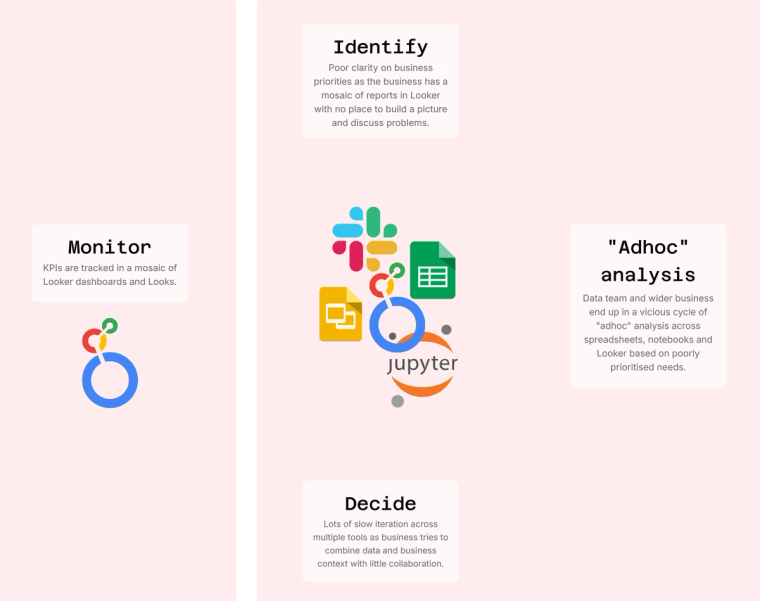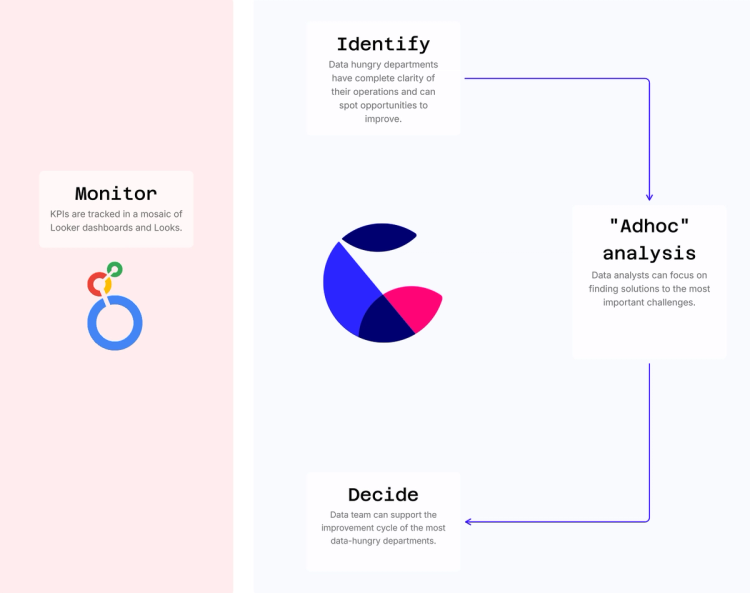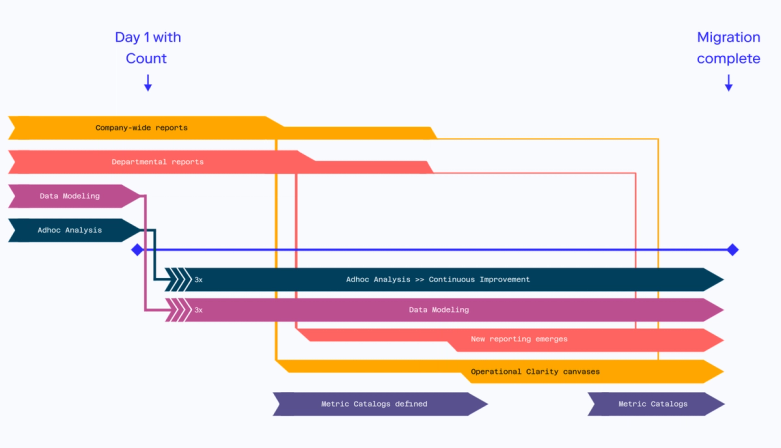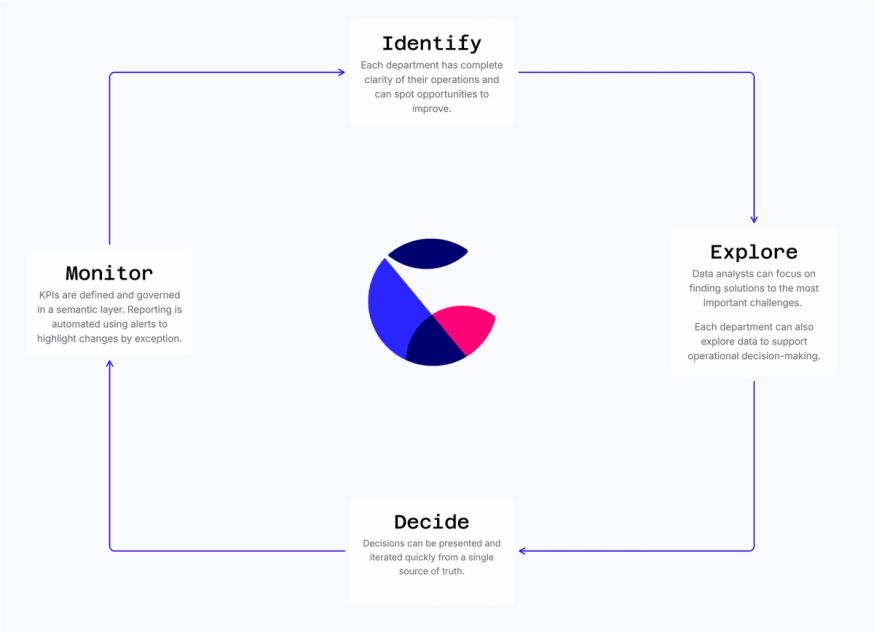Migrating From Looker To Count
The idea of migrating your BI tool can initially feel a bit overwhelming, especially when a lot of business logic and assets are wrapped up in LookML.
But in reality, many teams make the move to Count gradually, without the pressure of a large-scale, all-at-once migration. A more organic approach reduces overhead needed for migration, whilst maintaining business continuity.
The benefits of migrating
Looker is primarily used for dashboards and KPIs, but ad-hoc analysis happens in fragmented tools through data exports, leading to:
- Unstructured processes which are slow and fragmented
- "Insights" created across different tools, showing different numbers
- Data teams become siloed support functions
- Ultimately slowing business performance

Using Looker with Count
If Looker is still required, Looker could be used for top-level KPI reports and simple self-service - and have Count as your data-hungry team's secret weapon.
Count can be used to visualise, model and provide clarity on exactly what needs prioritising. Connect to any datasource and use advanced analytics to collaborate and identify the biggest opportunity areas for the business.

Steps to migrate
Step 1: Move exploratory analysis to Count
Analysts use Count to explore data, fix bugs, and collaborate with business teams, making ad-hoc analysis around 3x faster. LookML models can even be used as a data source.
Step 2: Build operational clarity canvases in initial teams
Data teams create operational clarity canvases in key departments like Product, Growth, and Go-to-Market, helping teams quickly spot opportunities.
As ad-hoc analysis evolves and new metrics emerge, teams naturally build their top-level reports in Count instead of returning to Looker.
Step 3: Define data models for initial teams
As metrics and operational reports get developed, the data team start to build out metrics Catalogs in Count to allow data hungry dept to self-service Count vs Looker.
Step 4: Migrate any remaining departments
At this stage, most of the data team's daily work lives in Count. The final step involves migrating occasional-use reports (like finance dashboards or company-wide metrics) and establishing self-service data models for each team.
Step 5: Complete migration and turn off Looker
Keep tracking usage of Looker reports to spot any remaining reports to migrate. Flag in these reports a deadline when they will be turned off and offer support to help migrate to Count.

Your new day-to-day post-Looker
Count transforms your entire business into a data-driven powerhouse, bringing all your metrics under one roof while letting everyone explore data their own way.
- Faster decisions - decision-making is accelerated with Count's collaborative, centralized approach.
- More cost efficient - data warehouse cost is reduced due to Count's semantic layer cacheing.
- Clear answers - metrics are defined, managed and contextualized in one place, so problems and opportunities are clearly visible.
- Empower all teams with data - every team becomes a data team.
With Count as your new data tool, you can expect both the quality and the rate of improvement to improve in your business.
